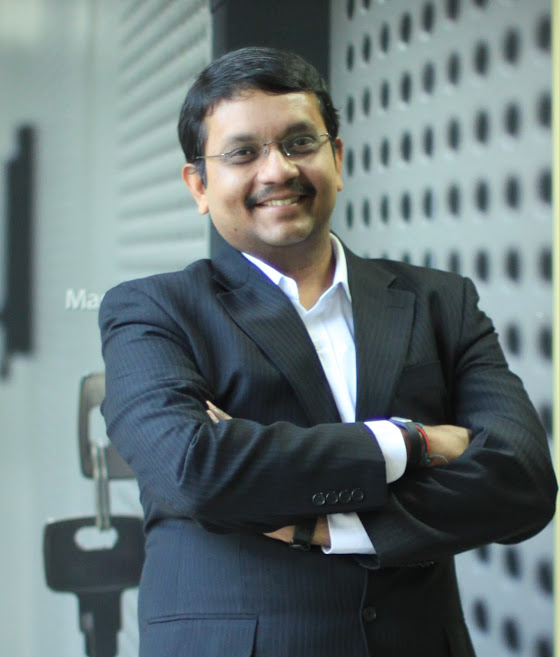EverestIMS Technologies Pvt. Ltd. (Everest) is a leading software company offering IOTM, AIOps and Telecom OSS solutions. The organization has global footprints through its focused product portfolio. Here is a snippet from a brief interaction between team IT-Voice and Satish Kumar V, CEO of EverestIMS Technologies.
Prateek: How does your business operate? What is your core offering?
Satish Kumar: We are unique in that we are the only company to offer on-premises, hybrid and SaaS model. EverestIMS Technologies is an AI-driven AIOPS Product company enabling Digital Transformation in the I&O space. We operate in India, SAARC, South East Asia and have laid the framework for starting in the Mid-East & US. We currently offer two broad-based product suites that cater to Enterprise & Telecom with over 250+ customers across multiple geographies.
Our product offerings span:
- Infraon IMS – a unified solution which helps enterprise take secure control of their IT infrastructure
- Infraon Desk – helps streamline and manage workflows with ITSM for better productivity and exemplary customer experience. It is also certified as ITIL compatible for 13 processes.
- Infraon NCCM – helps automate an organization’s configurations of network devices and helps define, authorize, deploy, and track changes on network infrastructure.
- Infraon SecuRA – a one-stop solution that provides business agility with its remote access, authorization, and security platform with centralized policies and Zero Trust features.
- Infraon OSS – targeted towards Telecoms which offers them a fully integrated customer centric Digital OSS System.
- Infraon AIOps – a platform-centric AI/ML-driven approach that helps empower multiple teams to be more responsive to outages and slowdowns and get bi-directional connectivity with ITSM technologies.
Prateek: How your products are scalable and flexible to meet unique business demands?
Satish Kumar: At EverestIMS our products are modular and integrated at the same time. Which means that we can deploy a given vertical specific product with a core set of features enabled towards solving a specific business problem, or we would also mesh it with another Infraon product (or the entire suite too) that would then elevate the offering by automating processes across platforms thus becoming an accelerator towards digital transformation. The Infraon Suite has been built to cater to all types of enterprise needs. It can scale from a small set of assets in a single location to a massive, multi-city deployment environment. In fact catering to burgeoning enterprise needs is our forte. We are amongst the few product suites that integrate AI as a core which then waterfalls out to the entire product set.
Prateek: How can Unified Management Solution bring in transformation to modern cloud and hybrid environments?
Satish Kumar: Moving to a modern cloud environment can empower companies to future-proof their operations with more agility, scalability, and speed. But you invariably start using multiple tools to manage the full digitalization journey. And managing these tools in siloes to keep your cloud environment up and running makes the problem worse – reducing workforce productivity, breaching SLAs, etc. With unified management, you get a single console to manage your cloud-based operations. Plus, you can build automated cross-capabilities to maximize the ROI of these tools. For e.g., if a Helpdesk software is integrated with a Change Management tool, tickets can be automatically raised when unwarranted changes are detected. This saves time and resources while ensuring uninterrupted business excellence. Unified management also comes with AI-enabled data analytics and a powerful dashboard to oversee KPIs, access real-time reports, etc. Also, while enterprise-wide digital transformation seems like the final destination, the reality’s that as of today – many companies are still in the hybrid phase. Their legacy systems are expected to work alongside cloud-hosted systems. So, the need for unified management is at an all-time high because it can be extremely challenging to manage your business-critical environments using multiple, disconnected command centers. Instead, it’s a lot more efficient to leverage an AI-powered integrated solution to monitor the availability and performance of all your infrastructure and assets under one proverbial roof.
Prateek: How can your company reduce IT Infrastructure costs?
Satish Kumar: Our products or integrated suite help drive smoother business enablement and process transformation – both of which are crucial to any growing enterprise. It is vital to ensure seamless and smooth operations, and reduce overheads. Moreover, you benefit from an agile and flexible response to evolving changes.
The Infraon Suite helps deliver measurable outcomes spanning:
- Automation reducing manual effort, cost, and risk of human errors
- Insightful capacity planning in real-time
- Streamlined business processes that enable employees to focus on growth and productivity
- Reduced systems’ downtime
- Quick response to unpredictable scenarios
- Enhanced customer experience
Historically, enterprises were formed into silos requiring technology specialists. The silo-based management caused slow response times and workflows. They also led to unsatisfactory customer experience. The shift to a more unified IT infrastructure management solution ushered in a dramatic change to enterprises on the way to digital transformation. With the expansion of the global IT ecosystem to include heterogeneous IT environments, on-premise and cloud-based data centers, only a unified management of IT infrastructure and assets can bring about a more efficient and streamlined setup of networks, applications, databases, virtualizations, etc.




